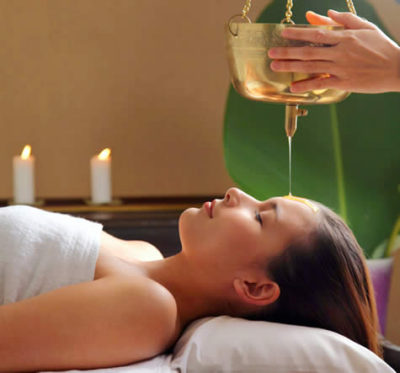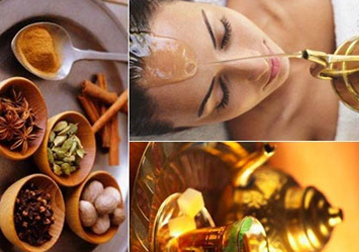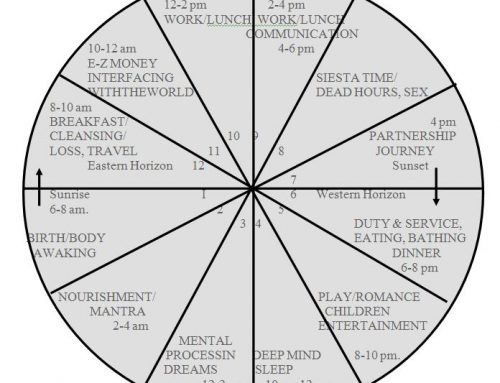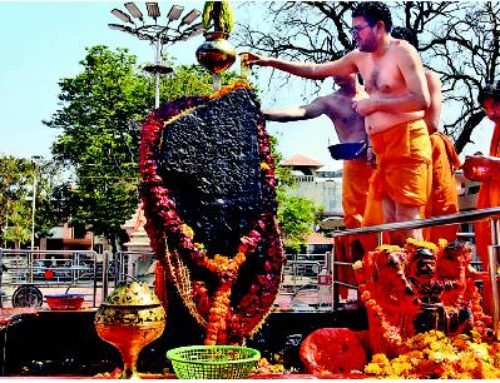Having recently immersed myself in an Ayurvedic detox program, called “panchakarma” in Sanskrit (or “punch your karma” in Texas-speak), I had time to consider what Ayurveda is and isn’t. We’ve all heard that it’s the “Science of Life”, but what does this really mean? The word “Ayu” is the root for the English words ever, never, aye, nay, eon, eternal, medieval, primeval, and utopia. All of these have a common thread, which is that the word “Ayu” means: “vital force, life, eternity.”
When you say, “aye!” (yes!), you are asserting that something has life force and existence. When you say “nay” (no) you are negating that. The sound and letter “N” is a negation across multiple languages, including English and Sanskrit. The same for “ever” and “never”– one has eternity, or Ayu, behind it- the other doesn’t.
Accordingly, Ayurveda is the science of life and longevity- it seeks to assert your Ayu by removing everything that stands in its way- removing the “N”s that accumulate in our bodies and minds over time. In fact, the core precept of Ayurveda is that life is essentially immortal, for Ayu is both “life force” and “eternity”.
The problem with our daily life is that we put too many “N”s in the way of our eternal Ayu, limiting its force. The goal of ayurvedic practice is to bring back a taste of eternity into our lives by helping us live with, rather than against nature. This is done by observing a daily routing that follows nature’s cycles. But even when we cannot observe an optimum lifestyle, Ayurveda gives us a free pass in the form of special therapies collectively called “pancha karma.”
In older times these may have been reserved uniquely for the ruling classes- the kings and queens of the world- who often spent long nights and busy days entertaining, eating, drinking, and then making important decisions. Doctors during those times well understood that the health of a kingdom often depended upon the health of its ruler. If a monarch was sick or feeling ill, he or she may not have made good decisions, resulting in ruin for the kingdom.
When you or I feel crabby because we haven’t slept well or have overeaten, we might get snappy with a neighbor or loved one, but this isn’t likely to result in catastrophe for the nation. But in the case of a monarch, waking up on the wrong side of the bed could result in just that, or at least hangings or imprisonment for the unlucky subjects whose only mistake was crossing paths with them at the wrong time.
As a result, Ayurvedic specialists created a series of intense therapies designed to drum the “N”s out of our bodies and minds and re-institute the flow of Ayu, quickly and effectively. Vedanta tells us that the nature of Self is Sat-Chit- Ananda: Being, Consciousness, and Bliss. We come close to that when we feel healthy- that sense of bliss and self-awareness arising out of simply being fully alive. Pancha karma is the practice that can help us do that by bringing our doshas into balance.
What’s a Dosha?
Dosha comes from the root dus which means “to cause pain”. Thus a dosha is a pathogenic factor- something that results in misery, pain, and suffering, particularly when it goes out of balance. This is not the standard definition you hear when you read generic websites or turn on the TV, but it is the real meaning. Because it takes so much time and energy to juggle the three doshas in order to avoid falling prey to their pain-causing effects, embodied life is said to be a constant struggle. Think about how much time we must spend in a day taking care of our bodies if we want to stay healthy- from brushing our teeth, bathing, eliminating wastes, to resting, looking for food, cooking, eating, drinking, exercising and otherwise maintaining ourselves. Wouldn’t it be nice to have a few days or weeks off every year when we can let others do this for us? Wouldn’t it be nice to have Ayurvedic health professionals take care of us while we uniquely work to release the “N”s in our lives, and with them the excess, pain-inducing doshas that populate our bodies and minds when we aren’t vigilant enough in our daily juggling.
Pancha karma starts with drinking ghee. This is in part because ghee is lipophyllic, attracting fat-soluble toxins into the GI tract where they can be excreted later. Drinking ghee also provokes your body to dump pitta into your intestines where, on day 6 or 7, it is followed by a full day of purgation- some 10 to 20* bowel movements or more- to flush out all the excess pitta from your system. This is stage one of PK, which is also accompanied by specialized massage, hot steam and oleation techniques designed to aid the detoxification process.
Now, many of the “N”s stored in your body in the form of “pitta” having been flushed away, PK proceeds to take care of the other two doshas, vata and kapha. Oil and decoction enemas, in addition to further treatments and a regulated diet leave you feeling younger and more aligned with your Ayu. Warm oil is particularly nutritive to vata, while herbal decoctions specific for your constitution help to clean both kapha and vata from the system., After a full three to six weeks of panchakarma, it is not hard to imagine living up to the 120 year lifespan suggested by Ayurveda and Vedic astrology alike, if not longer. In fact, there are some practices in India that are said to make one immortal. But that’s for another day…
- For my Ayurveda experience I went to Amrtasiddhi pancha karma center in Bali. I highly recommend their completely custo1mized, youth-restoring 21 day retreat (if you can afford it).
- If you’re going to India, Poonthatham is a highly-regarded panchakarma ashram at about half the price.
*Footnote 1: For pancha karma-level purgation, 10 vega or waves leading to bowel excretion are said to be hina- low and not enough. 15 vega are considred madhyama- average, and 20 or more is uttamam- the best result you can hope for optimally flushing pitta from your system. Accordingly, strong purgatives are given, and this should be supervised by a trained Ayurvedic physician.
*Footnote 2: In Vedic astrology, the vimshottari dasha (“120 year planetary period”) indicates that 120 years may be an attainable human lifespan. 120 years also makes up two Jupiter-Saturn return cycles of 60 years each.









